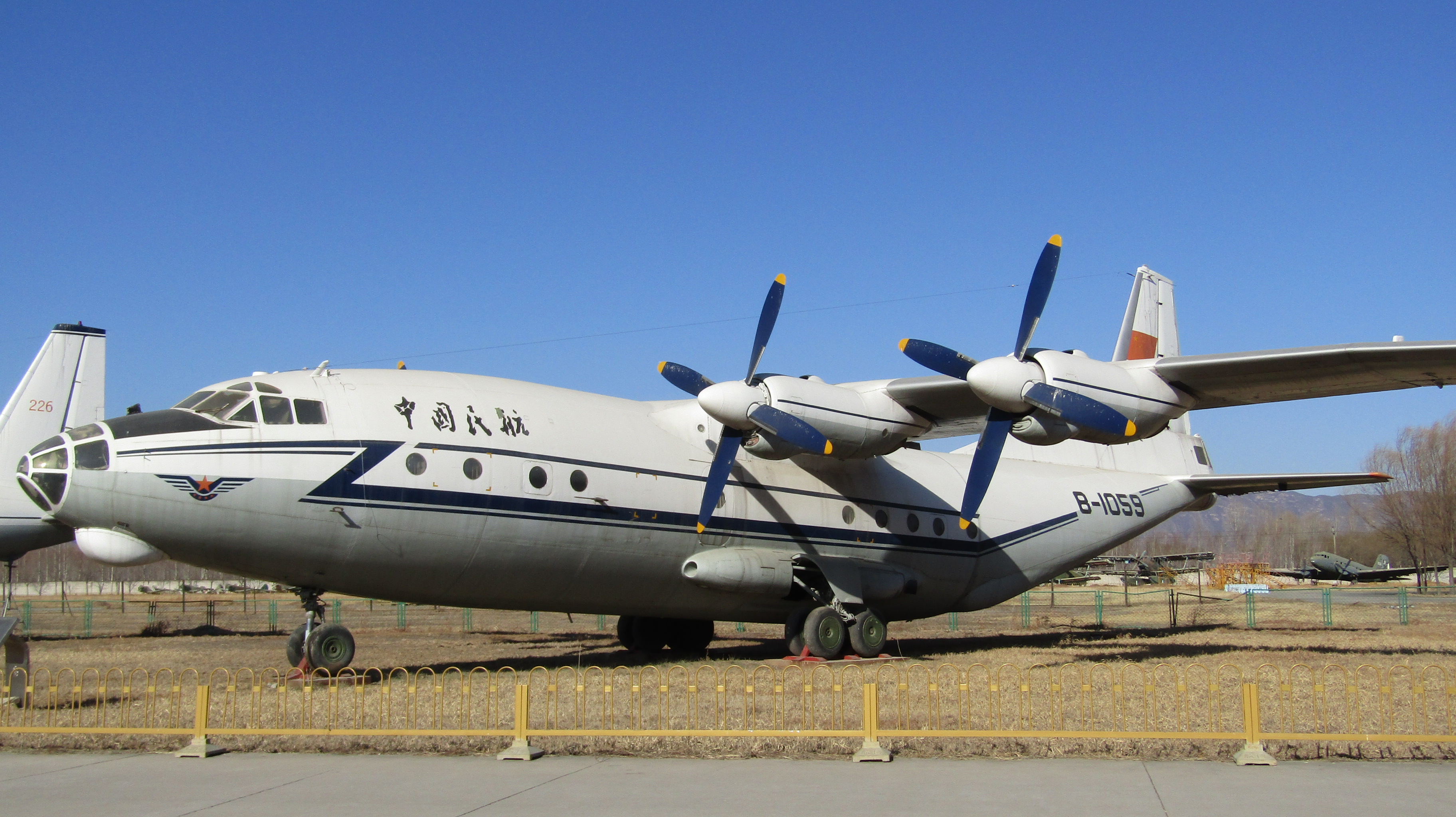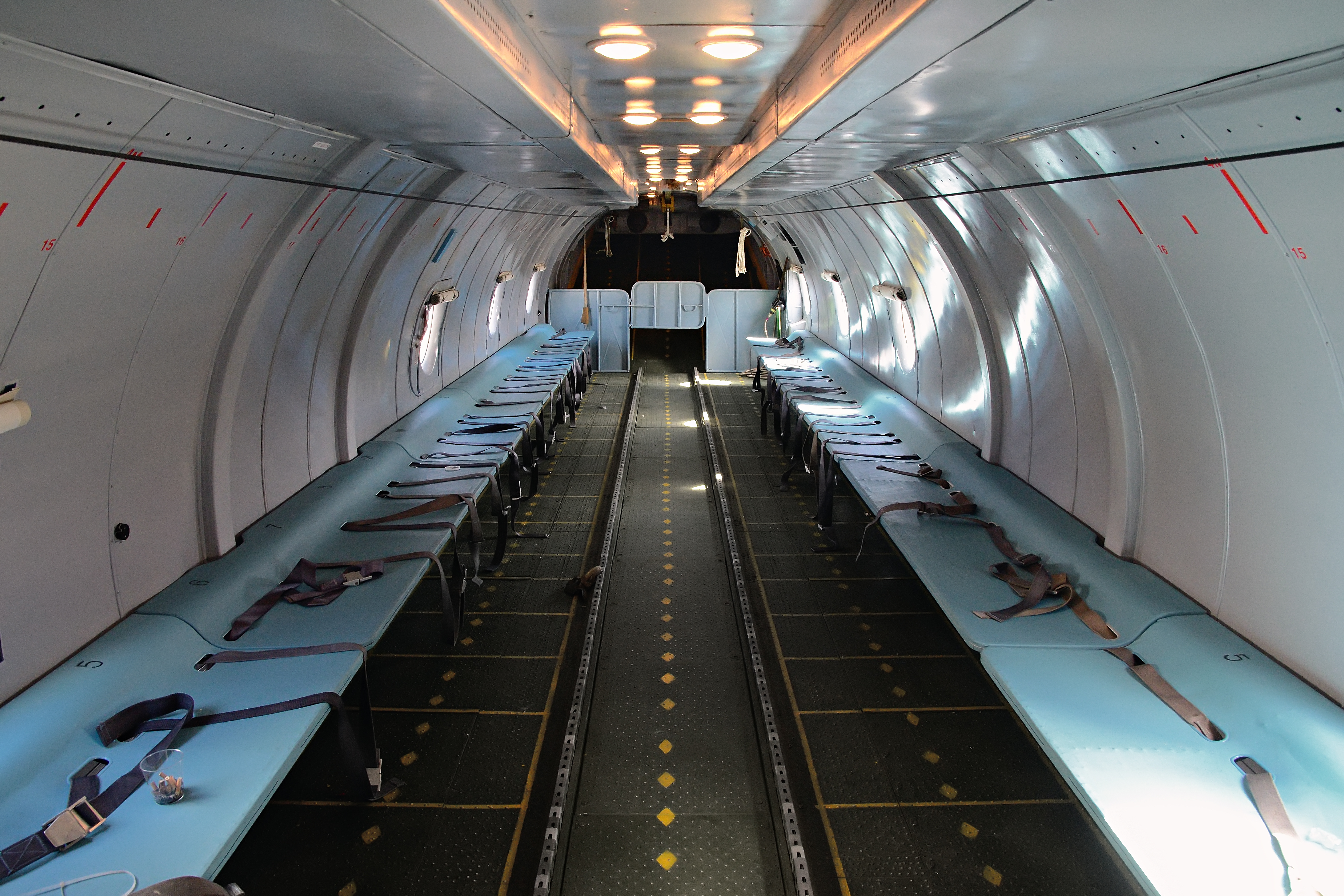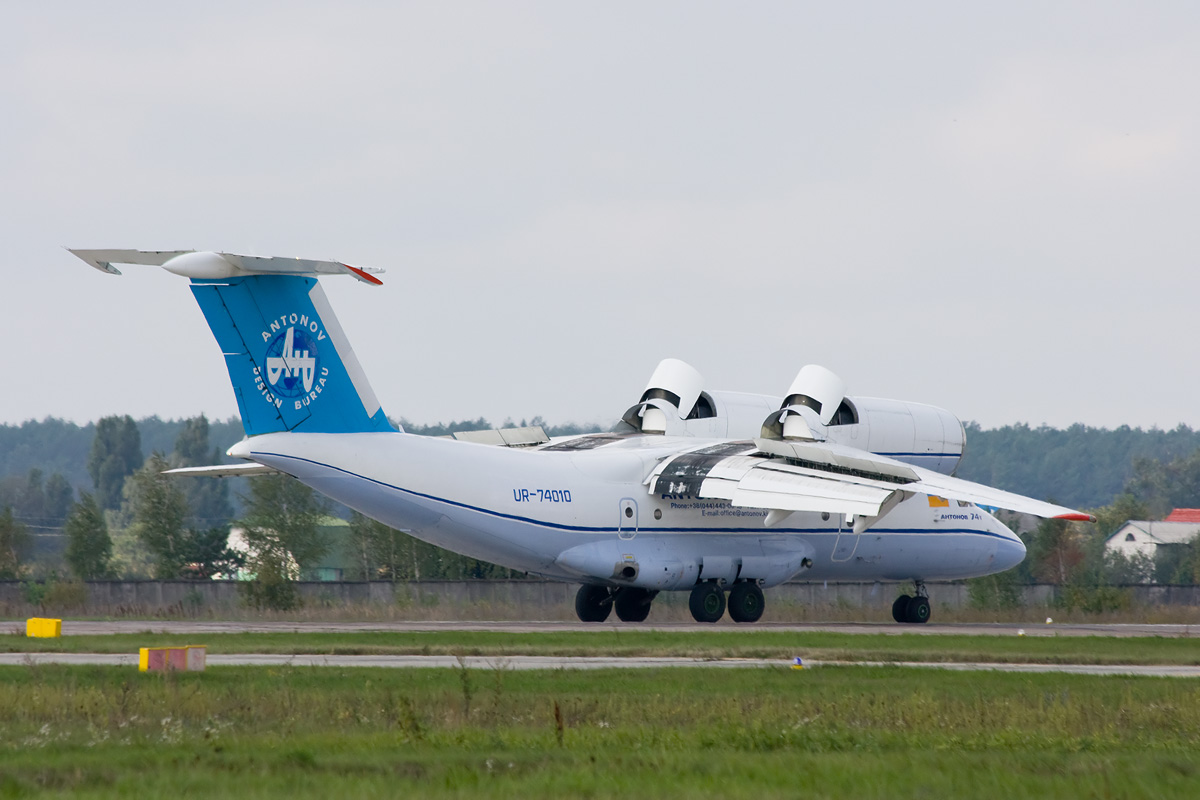|
Kupol Airport
Kupol Airport is an airport which services the eponymously named gold and silver mine, which is one of the largest gold and silver mines in the Russian Far East. It was built by the Kinross Gold Corporation. It is used to support the needs of its enterprise's operations in the Anadyr region of the Chukotka Autonomous Okrug (400 km northwest of the city of Anadyr). The nearest village is Ilirney, located 96 km from airport. Climate The airport is placed in the permafrost zone with a subarctic climate. The cold season lasts about 8 months. Facilities The airport only operates based on its scheduled flights. It is able to handle aircraft such as the Bombardier Q Series, Antonov An-12, Antonov An-74, Antonov An-140, Antonov An-24, Antonov An-26, Yak-40, and helicopters of all types. File:AN-74TK-100 landing at Kupol airport.jpg, An-74 landing File:IrAero Antonov An-24 (RA-46846) at Kupol Airport.jpg, An-24 Airlines and destinations Accidents and incid ... [...More Info...] [...Related Items...] OR: [Wikipedia] [Google] [Baidu] |
Kupol Gold Mine
Kupol Gold Mine is a combination underground and open pit gold and silver mine located in the Bilibinsky District of the Chukotka Autonomous Okrug of Russia, at the eastern end of the Anyuy Range. The mine, which produces gold and silver doré bars, is 100% owned by Toronto based Kinross Gold. The name Kupol (russian: купол), literally means "dome". History Development of the mine began in 2005 on a property owned by the Bema Gold Corporation. Bema Gold financed construction through a series of loans totaling $425 million. Bayerische Hypo und Vereinsbank and Société Générale provided $250 million, and $150 million was provided by an international consortium made up of Caterpillar, Export Development Canada, International Finance Corporation, and others. Bema Gold's corporate office loaned the remaining $25 million. In addition to the loans, the government of Chukotka Autonomous Okrug provided an additional $18 million to support construction. In 2007, Kinross purchased ... [...More Info...] [...Related Items...] OR: [Wikipedia] [Google] [Baidu] |
Antonov An-12
The Antonov An-12 (Russian: Антонов Ан-12; NATO reporting name: Cub) is a four-engined turboprop transport aircraft designed in the Soviet Union. It is the military version of the Antonov An-10 and has many variants. For more than three decades the An-12 was the standard medium-range cargo and paratroop transport aircraft of the Soviet air forces. A total of 1,248 were eventually built. Design and development Developed from the Antonov An-8, the An-12 was a military version of the An-10 passenger transport. The first prototype An-12 flew in December 1957 and entered Soviet military service in 1959. Initially, the aircraft was produced at the State Aviation Factory in Irkutsk. From 1962, production was transferred to Tashkent, where 830 were built. Later, production moved to Voronezh and Kazan. In military use, the An-12 has capacity for up to 100 fully equipped paratroopers or 20,000 kg (44,090 lb) of cargo, which is loaded through the rear loading ramp/door. ... [...More Info...] [...Related Items...] OR: [Wikipedia] [Google] [Baidu] |
Runway
According to the International Civil Aviation Organization (ICAO), a runway is a "defined rectangular area on a land aerodrome prepared for the landing and takeoff of aircraft". Runways may be a man-made surface (often asphalt concrete, asphalt, concrete, or a mixture of both) or a natural surface (sod, grass, soil, dirt, gravel, ice, sand or road salt, salt). Runways, as well as taxiways and Airport apron, ramps, are sometimes referred to as "tarmac", though very few runways are built using Tarmacadam, tarmac. Takeoff and landing areas defined on the surface of water for seaplanes are generally referred to as waterways. Runway lengths are now International Civil Aviation Organization#Use of the International System of Units, commonly given in meters worldwide, except in North America where feet are commonly used. History In 1916, in a World War I war effort context, the first concrete-paved runway was built in Clermont-Ferrand in France, allowing local company Michelin to ... [...More Info...] [...Related Items...] OR: [Wikipedia] [Google] [Baidu] |
Sokol Airport
Sokol Airport, formally Vladimir Vysotsky International Airport (russian: Аэропорт Сокол) is an airport in Sokol in Magadan Oblast, Russia. The airport is located 50 km (31 mi) north of the Magadan city center. The airport is sometimes confused with Dolinsk-Sokol air base in Sakhalin Island, which was home to the fighters that shot down Korean Air Flight 007 in 1983. History The airport was inaugurated on 12 January 1961 was then called Magadan-56 (due to its location on the 56 km on the Kolyma highway), took over all passenger air services in the region, only special-purpose flights were operated from the old airport (Magadan-47; (russian: Магадан-47/3 (Северный)) which was located at . In subsequent years, the value of the Magadan-47 airfield was lost, because unpaved runway did not meet the new technical requirements. In 1978, Promstroy began to reconstruct the runway and ground services buildings. On 13 December 1980, the first Il-6 ... [...More Info...] [...Related Items...] OR: [Wikipedia] [Google] [Baidu] |
Aurora (airline)
Aurora (russian: italic=yes, Аврора) is a Russian airline headquartered in Yuzhno-Sakhalinsk, Sakhalin Oblast. It is a subsidiary of Aeroflot which operates domestic and international flights in the Russian Far East region. , Aurora ranks among the top ten Russian biggest airlines in terms of carried passengers. History Aurora was created by government order of Russian Prime Minister Dmitry Medvedev. Aurora was named Taiga Airline for a short period of time before being named after the historic Russian cruiser ''Aurora''. Aeroflot formed the carrier by amalgamating SAT Airlines and Vladivostok Avia, which served 42 and 15 destinations respectively, and had a combined fleet of 24 aircraft plus 11 helicopters. These two carriers were expected to cease operations in early 2014. The number of routes served was planned to grow from 30 to 128, including the main cities of the Russian Far East, such as Khabarovsk, Magadan, Vladivostok and Yuzhno-Sakhalinsk. The carrier's firs ... [...More Info...] [...Related Items...] OR: [Wikipedia] [Google] [Baidu] |
Helicopter
A helicopter is a type of rotorcraft in which lift and thrust are supplied by horizontally spinning rotors. This allows the helicopter to take off and land vertically, to hover, and to fly forward, backward and laterally. These attributes allow helicopters to be used in congested or isolated areas where fixed-wing aircraft and many forms of STOL (Short TakeOff and Landing) or STOVL (Short TakeOff and Vertical Landing) aircraft cannot perform without a runway. In 1942, the Sikorsky R-4 became the first helicopter to reach full-scale production.Munson 1968.Hirschberg, Michael J. and David K. Dailey"Sikorsky". ''US and Russian Helicopter Development in the 20th Century'', American Helicopter Society, International. 7 July 2000. Although most earlier designs used more than one main rotor, the configuration of a single main rotor accompanied by a vertical anti-torque tail rotor (i.e. unicopter, not to be confused with the single-blade monocopter) has become the most comm ... [...More Info...] [...Related Items...] OR: [Wikipedia] [Google] [Baidu] |
Yakovlev Yak-40
The Yakovlev Yak-40 (russian: Яковлев Як-40; NATO reporting name: Codling) is a regional jet designed by Yakovlev. The trijet's maiden flight was in 1966, and it was in production from 1967 to 1981. Introduced in September 1968, the Yak-40 has been exported since 1970. Development By the early 1960s, Soviet international and internal trunk routes were served by Aeroflot, the state airline, using jet or turboprop powered airliners, but their local services, many of which operated from grass airfields, were served by obsolete piston-engine aircraft such as the Ilyushin Il-12, Il-14 and Lisunov Li-2.Stroud 1968, p. 269–270. Aeroflot wanted to replace these elderly airliners with a turbine-powered aircraft, with the Yakovlev design bureau being assigned to design it. High speed was not required, but it would have to be able to operate safely and reliably out of poorly equipped airports with short (less than 700 m or 2,300 ft) unpaved runways in poor weather.Gunsto ... [...More Info...] [...Related Items...] OR: [Wikipedia] [Google] [Baidu] |
Antonov An-26
The Antonov An-26 ( NATO reporting name: Curl) is a twin-engined turboprop civilian and military transport aircraft, designed and produced in the Soviet Union from 1969 to 1986.Gordon, Yefim. Komissarov, Dmitry & Sergey. "Antonov's Turboprop Twins". Hinkley. Midland. 2003. Development While the An-24T tactical transport had proved successful in supporting Soviet troops in austere locations, its ventral loading hatch restricted the handling of cargo, and in particular vehicles, and made it less effective than hoped in parachuting men and supplies. As a result, interest in a version with a retractable cargo ramp increased, and the Antonov design bureau decided in 1966 to begin development on the new An-26 derivative, in advance of an official order. The cargo ramp was based on that design and allowed the cargo deck to be sealed and pressurised in flight. When loading cargo, it could either be lowered to allow vehicles to be driven in, or slid beneath the aircraft's fuselage, so th ... [...More Info...] [...Related Items...] OR: [Wikipedia] [Google] [Baidu] |
Antonov An-24
The Antonov An-24 (Russian/Ukrainian: Антонов Ан-24) (NATO reporting name: Coke) is a 44-seat twin turboprop transport/passenger aircraft designed in 1957 in the Soviet Union by the Antonov Design Bureau and manufactured by Kyiv, Irkutsk and Ulan-Ude Aviation Factories. Design and development First flown in 1959, the An-24 was produced in some 1,000 units of various versions; in 2019 there are 109 still in service worldwide, mostly in the CIS and Africa. It was designed to replace the veteran piston Ilyushin Il-14 transport on short to medium haul trips, optimised for operating from rough strips and unprepared airports in remote locations. The high-wing layout protects engines and blades from debris, the power-to-weight ratio is higher than that of many comparable aircraft and the machine is rugged, requiring minimal ground support equipment. Due to its rugged airframe and good performance, the An-24 was adapted to perform many secondary missions such as ice recon ... [...More Info...] [...Related Items...] OR: [Wikipedia] [Google] [Baidu] |
Antonov An-140
The Antonov An-140 is a turboprop regional airliner, designed by the Ukrainian Antonov ASTC bureau as a successor to the Antonov An-24, with extended cargo capacity and the ability to use unprepared airstrips. Design and development First flown on 17 September 1997, the 52 passenger An-140 is manufactured at the main production line in Kharkiv by KHDABP, in Samara by Aviakor, and assembled under license by Iran Aircraft Manufacturing Industrial Company (HESA) in Iran as the IrAn-140. Assembly in Kazakhstan has also been discussed in tri-partite discussions between the Kazakh government, Ukraine and Russia. An identical-in-appearance airplane with the same name is also manufactured by Aviakor in Samara, Russia. Since Ukraine is no longer cooperating with Russia in aircraft production, the Aviakor version of the An-140 is manufactured entirely with Russian components. The P&W Canada engine option is not offered. Variants ;An-140T (Tactical airlifter): The An-140T is a light mil ... [...More Info...] [...Related Items...] OR: [Wikipedia] [Google] [Baidu] |
Antonov An-74
The Antonov An-74 (NATO reporting name: Coaler) is a Soviet/Ukrainian transport aircraft developed by Antonov. It is a variant of the An-72. The An-72 and An-74 get their nickname, , from the large engine intake ducts, which resemble the oversized ears of the popular Soviet animated character of the same name. Design and development The An-74 was initially an upgrade of the An-72 test aircraft, intended to be used in the Arctic and Antarctica; and had the designation An-72A "Arctic". The aircraft's main purpose is to deliver cargo, equipment and personnel over short- and medium-range routes in any climatic conditions ranging from and at any latitude, including the North Pole, and high altitudes. It can operate to and from low grade airstrips such as concrete, pebble, ice and snow aerodromes. Produced in tandem with the An-72, the An-74 can be fitted with wheel-ski landing gear, de-icing equipment and a number of other upgrades allowing the aircraft to support operations in Ar ... [...More Info...] [...Related Items...] OR: [Wikipedia] [Google] [Baidu] |
De Havilland Canada Dash 8
The De Havilland Canada DHC-8, commonly known as the Dash 8, is a series of turboprop-powered regional airliners, introduced by de Havilland Canada (DHC) in 1984. DHC was later bought by Boeing in 1988, then by Bombardier in 1992; then by Longview Aviation Capital in 2019, reviving the De Havilland Canada brand. Powered by two Pratt & Whitney Canada PW100s, it was developed from the Dash 7 with improved cruise performance and lower operational costs, but without STOL performance. Three sizes were offered: initially the 37–40 seat -100 until 2005 and the more powerful -200 from 1995, the stretched 50–56 seats -300 from 1989, both until 2009, and the 68–90 seats -400 from 1999, still in production. The QSeries are post-1997 variants fitted with active noise control systems. Development Initial development In the 1970s, de Havilland Canada had invested heavily in its Dash 7 project, concentrating on STOL and short-field performance, the company's traditional ... [...More Info...] [...Related Items...] OR: [Wikipedia] [Google] [Baidu] |





_Tulpar_Air).jpg)




